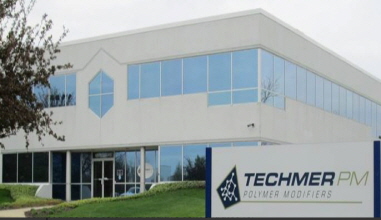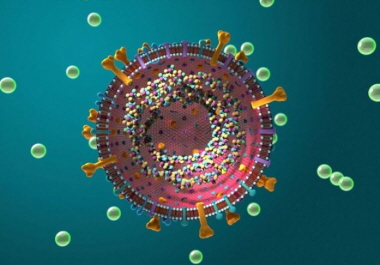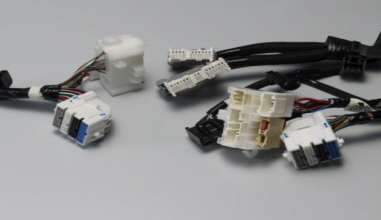Chemical reports
US Army turn plastic waste into 3D filament
작성자 : Aeyoung Park
2018-04-09 |
조회 : 4152
Thermo Fisher helping US Army turn plastic waste into 3D parts
A small footprint twin-screw extruder from Thermo Fisher Scientific Inc. is helping the U.S. Army to reduce its plastic waste and, ultimately, shorten the lead time and lower the cost for replacement parts needed by troops in remote areas.
Waltham, Mass.-based Thermo Fisher sold its Process 11 parallel twin-screw extruder to the Army in 2017 for an undisclosed amount. The machine will be used to produce 3D filament from post-consumer PET, which will then be used to 3D print spare parts as needed.
The strategy stems from a collaboration between the U.S. Army Research Laboratory (ARL) and the U.S. Marine Corps that resulted in the discovery of using recyclable plastics from discarded water bottles, milk jugs and yogurt containers, for example, for 3D printing parts that soldiers may need on the battlefield or in more isolated areas.
The study of the potential applications is being led by ARL researcher Nicole Zander and Capt. Anthony Molnar of the U.S. Marine Corps. So far, research has resulted in the production of a 3D filament made of 100 percent recycled PET from bottles or containers without any chemical modifications or additives.
"The idea is if they have a gear or a sprocket or something that's broken, it's very difficult for them to go out and source that. It's also dangerous for them to source it, so they won't be able to be self-sufficient," Steve Post, business development manager at Thermo Fisher, said in a March 26 phone interview.
"Our role was to come up with a machine that was scalable [and] could process these materials," he added. "With polyester, you're driving off the moisture, so that's why you need something that's fully scalable."
The 11 mm co-rotating twin-screw extruder is a fully scalable unit with a maximum output of 2-5 pounds per hour. It has a 40:1 L/D ratio. As Thermo Fisher's smallest twin-screw extruder — the company offers diameters up to 24 mm — it takes up just under 5 square feet of lab space.
"It has the full functionality of most larger size compounding extruders," he said.
While the Army is not new to additive manufacturing — ARL has been 3D printing parts for about 18 years — its research in determining recycled PET as a viable feedstock is a big step toward improving sustainability by reducing plastics waste.
PET water bottles and packaging are among the most common types of waste found on the battlefield, the Army said.
"Most waste is disposed of in open burn pits, which is not optimal for human health and the environment," Zander said in a March 28 email. "Reuse/reclamation/recycling of these materials will provide a huge benefit to the military."
U.S. Army Research Laboratory Nicole Zander of the U.S. Army Research Laboratory, in collaboration with the U.S. Marine Corps, is in the process of securing funding to build a mobile recycling facility where soldiers can repurpose plastics into feedstocks for 3D printing.
Post said the Army's work is also well-aligned with Thermo Scientific's mission of "enabling our customers to make the world healthier, cleaner and safer."
"They've taken a situation where it's difficult for them to get rid of garbage when they're in places like Afghanistan, so they have to either incinerate it, which sends up a warning flag for where they are and it's not good for the environment," Post said. "So, they're trying to … get rid of that part of the process and make something good from it, which is turning it around and making 3D filament."
Mechanical testing, such as uniaxial tensile and three-point bending experiments, with the recycled PET was done in the laboratory. Zander said the recycled PET was compared with commercial filaments and was found to have similar strength.
Researchers also tested and compared 3D printed radio brackets made from the recycled PET with brackets made from commercial ABS, and found that the recycled PET brackets failed at a similar load.
"3D printing of spare parts could reduce our military's logistics tail, while increasing operational readiness," Zander said. "This becomes increasingly important with respect to long lead time and obsolete components."
Zander and Molnar's team is currently working on securing funding to build a mobile recycling facility that will enable soldiers to repurpose plastics into feedstocks for 3D printing. The facility will consist of a plastics processing lab housed in a 20-foot ISO container, Zander said. The team hopes to have the first container built for testing by the end of 2018.
Additionally, Zander is studying ways to blend other plastics with the recycled PET or adding fillers, such as reinforcing or toughening agents, to further improve the mechanical properties so it can be used in more applications.
Although researchers determined that recycled plastics have shown to be a suitable material for 3D printing, "many challenges remain," Zander said.
"The process to make filament is still somewhat complicated and not automated, and will require a certain amount of training," she said. "In addition, there is a much larger supply of recycled plastics than [what] can be used for 3D printing due to the relatively slow processing and 3D printing time scales. We are considering efforts to improve and scale up this process."
Thermo Fisher will be at Booth S28161 during NPE2018, May 7-11 in Orlando, Fla.
Source: Plastics News




















